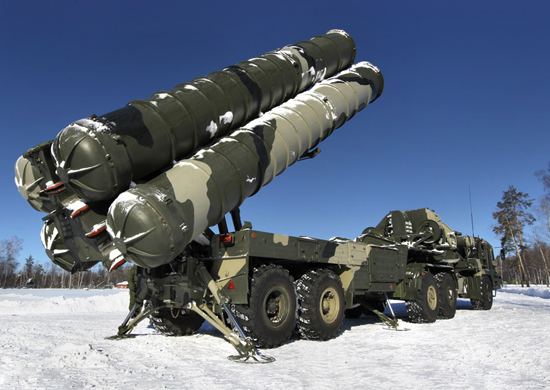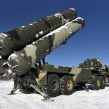
Aerospace Defense Forces: Russia’s New Military Reform Agenda
Publication: Eurasia Daily Monitor Volume: 9 Issue: 61
By:

Moscow’s military priorities have fundamentally shifted since launching the reform of its conventional Armed Forces in the fall of 2008. The shift has been away from a wider effort to transform and modernize the Ground Forces as well as reverse the decline of the Air Force and the Navy. Instead the reform will place future emphasis upon a new branch of service: the Aerospace Defense Forces (Vozdushno Kosmicheskaya Oborona – VKO). This seems to reflect an assessment on the part of the General Staff concerning the threat environment, and signals a further departure from modeling forces to combat terrorism or insurgency. The new priority on the VKO has left many Russian military specialists bewildered concerning the nature of the decision making that preceded the latest twist in the reform agenda. Aleksei Sinikov, a former Professor in the Zhukov Aerospace Defense Academy criticized the creation of the VKO, raising questions about the underlying military science. In Sinikov’s view, the most important aspect of military science is to predict the nature of future warfare and allow decision makers to plan accordingly, but he concludes that the scientific background may be lacking in this case (Nezavisimoye Voyennoye Obozreniye, March 23).
On December 1, 2011 the VKO was officially formed, headed by Lieutenant-General Oleg Ostapenko and his first deputy General Valeriy Ivanov. Two commands were included in the structure: the Space Command headed by Major-General Oleg Maydanovich and the PVO and PRO (Air and Missile Defense) under Major-General Sergei Popov. In the first phase of equipping the VKO, which is placed operationally under the General Staff, the PVO/PRO Command’s missile defense division and three S-44 SAM brigades stationed in Podmoskovye were tasked with protecting Moscow. It is planned to reinforce this defense with additional brigades and by 2020 to introduce the advanced S-500 air defense system. Initially, Army-General Nikolai Makarov, the Chief of the General Staff, opposed utilizing assets from the Military Districts (MDs) to equip the VKO and preferred an entirely new arsenal, but he had to accept a compromise. Reportedly, the long term re-equipping plans for the VKO envisage spending 20 percent of the funds allocated to the rearmament program to 2020. General Ivanov describes the main mission of the VKO as being to “discover the beginning of an attack and warn the country’s leadership for subsequent decision making: detect, destroy, neutralize and cover facilities” (Interfax, February 15; Rossiyskaya Gazeta, December 2, 2011).
An early critique of the multiple pressures on the existing structures, and the course of the reform of the Armed Forces as a consequence of forming the VKO, came from Lieutenant-General (retired) Anatoliy Gavrilov, an expert in the Association of Military Political Analysts. Gavrilov argued that the interest in S-400 and S-500 systems would lead to a diminution in the importance of tactical PVO. By 2020, the VKO would receive 56 S-400 complexes and equip ten battalions with the latest S-500s. Gavrilov asked where these ambitious plans left tactical PVO, drawing attention to the importance of mobile air defense systems to protect motorized rifle brigades from air strikes. Tactical PVO radio technical units have been disbanded, with none of the more than thirty radio technical battalions left in existence. The training of officers from the Radio Technical Troops has been halted, while 80 percent of equipment in the tactical PVO inventory is obsolete. Without serious attention and consistent support for the defense industry’s weak capacity to modernize such systems, tactical PVO may face a deep crisis within ten to fifteen years (Nezavisimoye Voyennoye Obozreniye, December 5, 2011).
With concern running deep within the security elite in Moscow concerning the potential to strike a deal on missile defense cooperation with NATO, and the expression of anxiety about the possible future threat to Russia from air and space-based weapons systems contained in the 2010 Military Doctrine, there are certainly grounds for seeing a change in the threat perception as the main driver for the creation of the VKO. But Sinikov’s question regarding the quality of Russian military science suggests a gamble is involved in the calculation: the “guesstimate” is that the Russian state may be more likely to face an attack from an air- and space-equipped hypothetical enemy than from international terrorism or domestic insurgency. Moreover, having set aside almost 20 trillion rubles for the GPV to 2020 to rearm the Armed Forces, only to later siphon 20 percent of this figure for the VKO implies that a serious change in the threat perception has occurred (Nezavisimoye Voyennoye Obozreniye, March 23).
The first assembly for officers from the VKO was held in Moscow in early December 2011. Officers were shown particular features of prosecuting maneuver combat operations by air-defense missile and radio technical subunits of air and missile defense in which the S-400 served as the main testing component. The VKO’s command staff was also given a demonstration of the technical possibilities of navigation equipment linked to the orbital GLONASS system and its future development. Conferences within the four MDs have also been organized, including a missile firing conference in the East MD (Krasnaya Zvezda, January 12; Krasnaya Zvezda, December 17, 2011).
Major-General (retired) Vyacheslav Ryzhonkov, the former Head of the Zhukov Aerospace Defense Academy, and Colonel (retired) Aleksandr Dreshin, in the Instruction and Methodological Department, Zhukov Aerospace Defense Academy, recently examined the long-term challenges facing the VKO. In their view the following issues may prove to be insurmountable tasks facing the defense ministry: no precise distribution of the administrative and operational functions among the commands of the MDs and commanders of the services and branches of the Armed Forces; the discrepancy between the rights and responsibilities assigned to the VKO command; a functional integration problem for air defense and missile-space defense; integration problems for anti-aircraft and aviation forces and means; command and control (C2) issues linked to air defense troops in the MDs within the borders of the joint strategic commands in wartime; and VKO staff training (Vozdushno Kosmicheskaya Oborona, February, 2012).
During combat operations, the Joint Strategic Commands assume overall authority in the conduct of operations; however, having formed the VKO, some operative functions are being returned to the new unified command. Moreover, Missile-Space Defense, Anti-Aircraft-Missile Troops, Radio-Electronic Troops, Fighter Aviation specialists, and Electronic Warfare and Reconnaissance specialists have a limited understanding of the specifics of each other’s C2 activities and weapons systems. This serves to mitigate any effort to ingrate these specialists, and will take time to correct. The authors concluded that in the future the VKO will need to introduce VKO officer posts in the C2 bodies; define the staff posts for VKO officers and the specialist training in military educational facilities; develop national standards for qualified VKO specialists; and organize a system of VKO specialist training (Vozdushno Kosmicheskaya Oborona, February, 2012).
The creation of the VKO will further complicate Moscow’s efforts to reform the conventional Armed Forces, placing additional pressures on the rearmament program and test the defense industry. It also marks a shift in terms of threat perception, consistent with the high level of interest in transitioning toward more high technology-centered forces; but, the challenges facing the development of the VKO itself will serve as a testing ground for the durability of the modernization agenda.




